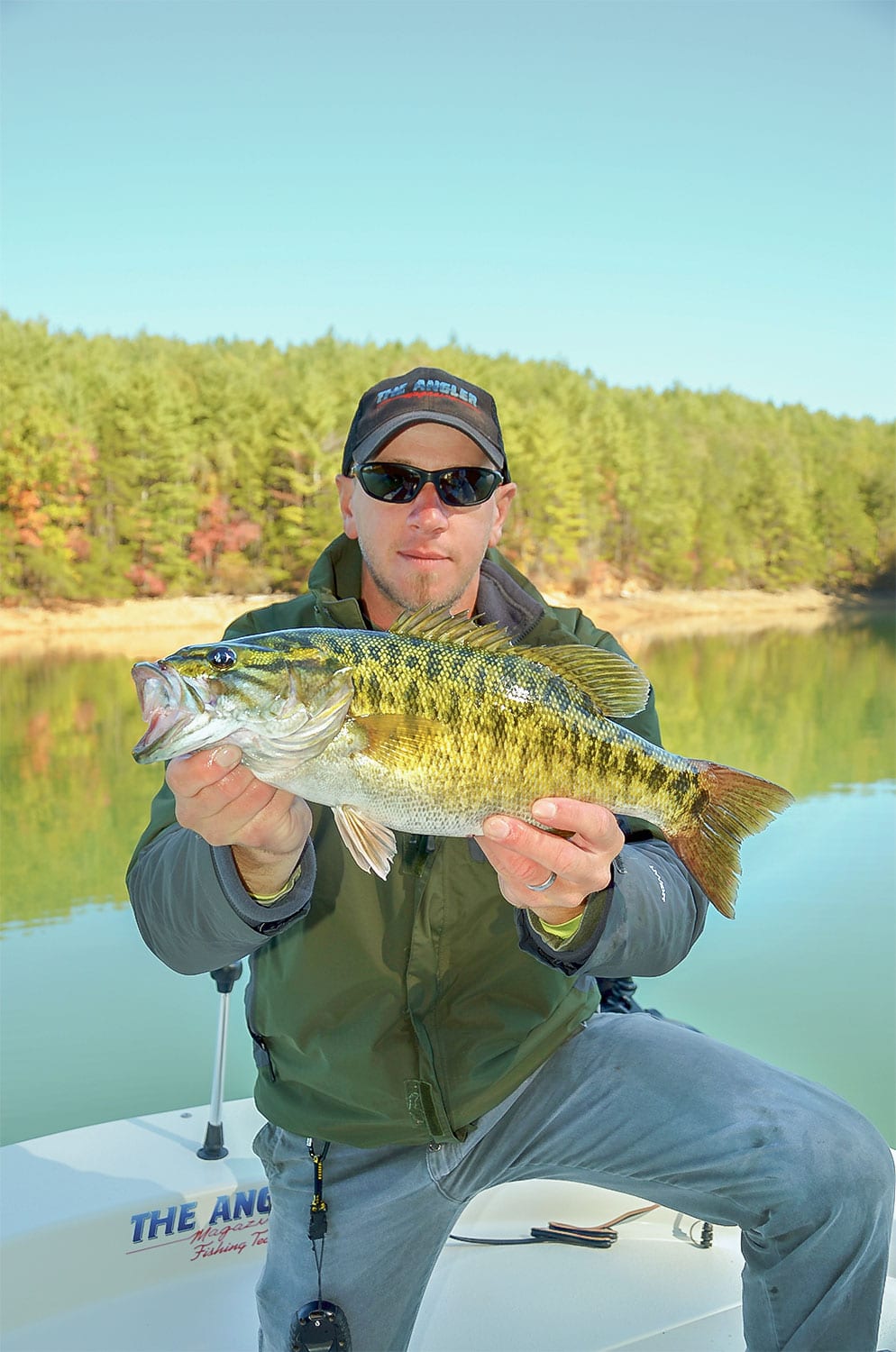Every few years a new technique explodes on the bass fishing scene. These trends usually arise from the tournament circuits. They trickle down to the weekend warriors, and then they either fade away or become regular tactics in every bass-angler’s arsenal.
Right now, the technique of the moment is the Ned rig. This finesse tactic arose from the Midwest and took the tournament world by storm. It has held the spotlight for about four years now, and it doesn’t appear to be losing any steam. Although it’s not the most exciting tactic for the angler to fish, catching fish is exciting, and the Ned rig is an excellent bait for big numbers of spotted bass and smallmouths. It’ll catch largemouths too. But the situation in which the Ned rig really shines is when things get tough. If the fish aren’t eating anything else, they’ll probably pick up a Ned rig.
On those post-frontal days in winter, when bass are deep on the main lake, hugging tight to vertical structure like bluff walls, channel drops and standing timber, it’s time to rig up a Ned and go to work. Knowing and trusting your electronics is very important. High-definition sonar will allow you to see the fish down there. If you can see the fish schooled up, you can probably get them to bite. Like the dropshot before it—the Ned rig is perfect when bass are looking for a meal that is small and slow moving.
For those still unfamiliar with the Ned rig, it’s a miniature soft-plastic stick bait threaded on a light 1/8- to 1/32-ounce mushroom-style jighead. There are short 3- to 5-inch plastic worms on the market designed specifically for the Ned rig, but cutting a regular stick bait down to length works just as well. A drop of superglue holding the worm to the jighead will work wonders for making this rig more durable.
When fishing at winter depths with finesse tackle, light line should be matched with a light spinning rod with a supple tip. Strikes can be very subtle, especially when transmitted up from the depths. Go as light as you dare, with 4- to 8-pound-test braid finished off with a fluorocarbon leader. The braided line has less stretch than monofilament, which makes it easier to feel what’s going on with the bait.
A Ned rig worked steadily along the bottom can be irresistible to fish when they are actively feeding. When the fish are more sluggish, letting that jig head sit on the bottom without moving it is a better tactic. The soft-plastic tail will stick up vertically, and even the slightest shake of the rod tip will give it a little wiggle.
Cast the bait and let it fall all the way to the bottom on slack line. Watch the line during the fall, because bass will often pick the bait up before it hits bottom. Once it hits bottom, let the Ned sit as long as you can stand to before giving it a little wiggle. Again, it’s not the most exciting way to fish, but it does catch fish—sometimes when nothing else will.
